Mercedes EQS vs NIO ET7 – Which car suits you better?
Compare performance, boot capacity, efficiency and price at a glance.
Find out which car is the better choice for you – Mercedes EQS or NIO ET7?
Costs and Efficiency:
Looking at overall running costs, both models reveal some interesting differences in everyday economy.
NIO ET7 has a convincingly advantage in terms of price – it starts at 59900 £, while the Mercedes EQS costs 93900 £. That’s a price difference of around 33986 £.
In terms of energy consumption, the advantage goes to the Mercedes EQS: with 16.50 kWh per 100 km, it’s to a small extent more efficient than the NIO ET7 with 19 kWh. That’s a difference of about 2.50 kWh.
As for range, the Mercedes EQS performs noticeable better – achieving up to 816 km, about 232 km more than the NIO ET7.
Engine and Performance:
Power, torque and acceleration are the classic benchmarks for car enthusiasts – and here, some clear differences start to show.
When it comes to engine power, the NIO ET7 has a a bit edge – offering 653 HP compared to 544 HP. That’s roughly 109 HP more horsepower.
In acceleration from 0 to 100 km/h, the NIO ET7 is slightly quicker – completing the sprint in 3.80 s, while the Mercedes EQS takes 4.40 s. That’s about 0.60 s faster.
In terms of top speed, the Mercedes EQS performs barely noticeable better – reaching 210 km/h, while the NIO ET7 tops out at 200 km/h. The difference is around 10 km/h.
There’s also a difference in torque: Mercedes EQS pulls minimal stronger with 858 Nm compared to 850 Nm. That’s about 8 Nm difference.
Space and Everyday Use:
Cabin size, boot volume and payload all play a role in everyday practicality. Here, comfort and flexibility make the difference.
Both vehicles offer seating for 5 people.
In curb weight, NIO ET7 is barely noticeable lighter – 2434 kg compared to 2545 kg. The difference is around 111 kg.
In terms of boot space, the Mercedes EQS offers clearly more room – 610 L compared to 363 L. That’s a difference of about 247 L.
When it comes to payload, Mercedes EQS slightly takes the win – 565 kg compared to 466 kg. That’s a difference of about 99 kg.
Who wins the race?
The Mercedes EQS proves to be edges ahead and therefore becomes our DriveDuel Champion!
Mercedes EQS is the better all-rounder in this comparison.
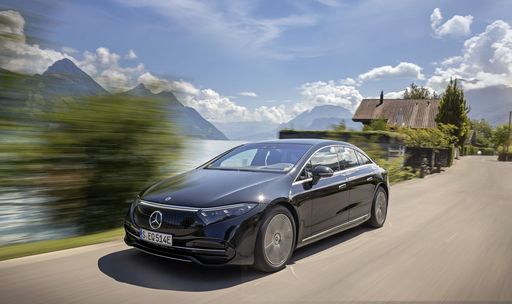
Mercedes EQS
Mercedes EQS
The Mercedes-Benz EQS redefines luxury in the realm of electric vehicles, combining exceptional comfort with cutting-edge technology. Its sleek and aerodynamic design is a testament to both elegance and efficiency, setting new standards for the brand. Inside, the EQS offers a serene and spacious cabin equipped with the latest advancements, ensuring a refined driving experience.
details @ group-media.mercedes-benz.com
@ group-media.mercedes-benz.com
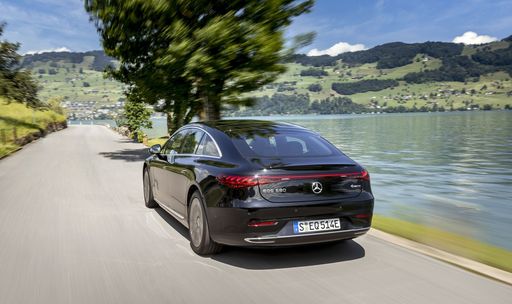 @ group-media.mercedes-benz.com
@ group-media.mercedes-benz.com
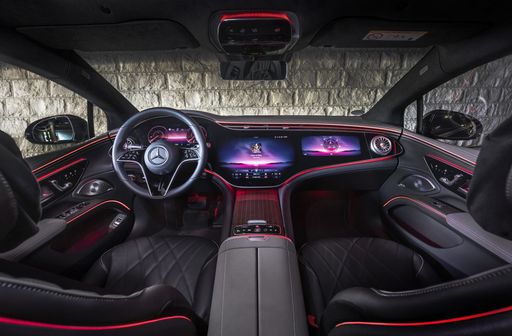 @ group-media.mercedes-benz.com
@ group-media.mercedes-benz.com
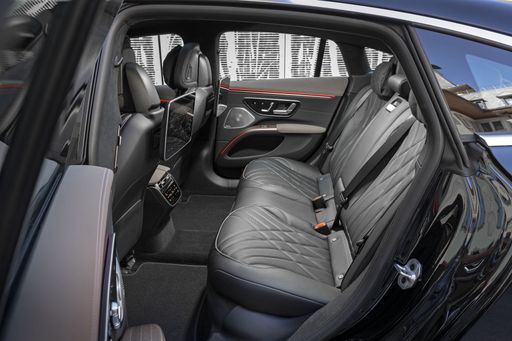 @ group-media.mercedes-benz.com
@ group-media.mercedes-benz.com
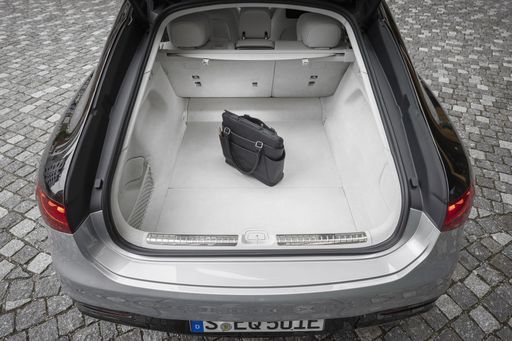 @ group-media.mercedes-benz.com
@ group-media.mercedes-benz.com
NIO ET7
The ET7, NIO's premium electric sedan, combines cutting-edge technology with luxurious comfort to create a remarkable driving experience. Its sleek design is not only visually captivating but also enhances aerodynamic efficiency, contributing to its impressive performance. With a focus on sustainability, the ET7 promises to redefine the landscape of electric mobility with its innovative features and environmentally-friendly credentials.
details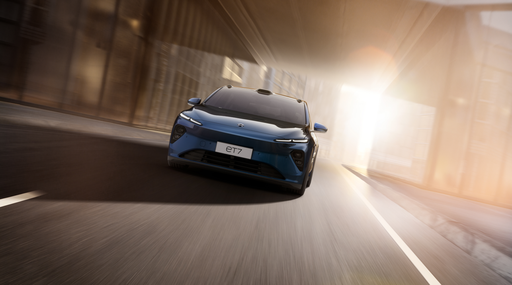 @ NIO
@ NIO
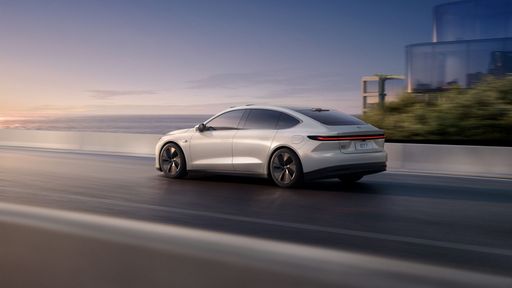 @ NIO
@ NIO
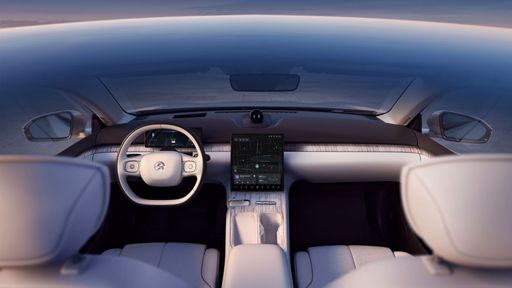 @ NIO
@ NIO

|

|
|
|
|
Costs and Consumption |
|
|---|---|
|
Price
93900 - 123500 £
|
Price
59900 - 68900 £
|
|
Consumption L/100km
-
|
Consumption L/100km
-
|
|
Consumption kWh/100km
16.5 - 17.2 kWh
|
Consumption kWh/100km
19 - 19.3 kWh
|
|
Electric Range
790 - 816 km
|
Electric Range
451 - 584 km
|
|
Battery Capacity
118 kWh
|
Battery Capacity
73.5 - 90 kWh
|
|
co2
0 g/km
|
co2
0 g/km
|
|
Fuel tank capacity
-
|
Fuel tank capacity
-
|
Dimensions and Body |
|
|---|---|
|
Body Type
Hatchback
|
Body Type
Sedan
|
|
Seats
5
|
Seats
5
|
|
Doors
5
|
Doors
4
|
|
Curb weight
2545 - 2655 kg
|
Curb weight
2434 - 2454 kg
|
|
Trunk capacity
610 L
|
Trunk capacity
363 L
|
|
Length
5223 mm
|
Length
5101 mm
|
|
Width
1926 mm
|
Width
1987 mm
|
|
Height
1512 mm
|
Height
1509 mm
|
|
Max trunk capacity
1770 L
|
Max trunk capacity
-
|
|
Payload
550 - 565 kg
|
Payload
446 - 466 kg
|
Engine and Performance |
|
|---|---|
|
Engine Type
Electric
|
Engine Type
Electric
|
|
Transmission
Automatic
|
Transmission
Automatic
|
|
Transmission Detail
Reduction Gearbox
|
Transmission Detail
Reduction Gearbox
|
|
Drive Type
All-Wheel Drive, Rear-Wheel Drive
|
Drive Type
All-Wheel Drive
|
|
Power HP
360 - 544 HP
|
Power HP
653 HP
|
|
Acceleration 0-100km/h
4.4 - 6.2 s
|
Acceleration 0-100km/h
3.80 s
|
|
Max Speed
210 km/h
|
Max Speed
200 km/h
|
|
Torque
568 - 858 Nm
|
Torque
850 Nm
|
|
Number of Cylinders
-
|
Number of Cylinders
-
|
|
Power kW
265 - 400 kW
|
Power kW
480 kW
|
|
Engine capacity
-
|
Engine capacity
-
|
General |
|
|---|---|
|
Model Year
2024
|
Model Year
2022
|
|
CO2 Efficiency Class
A
|
CO2 Efficiency Class
A
|
|
Brand
Mercedes-Benz
|
Brand
NIO
|
What drivetrain options does the Mercedes EQS have?
Available configurations include All-Wheel Drive or Rear-Wheel Drive.
The prices and data displayed are estimates based on German list prices and may vary by country. This information is not legally binding.
